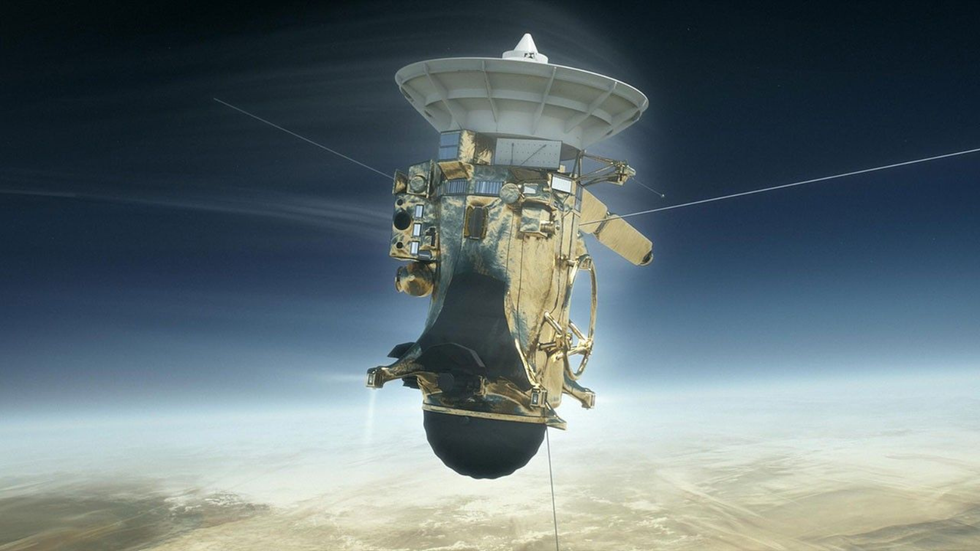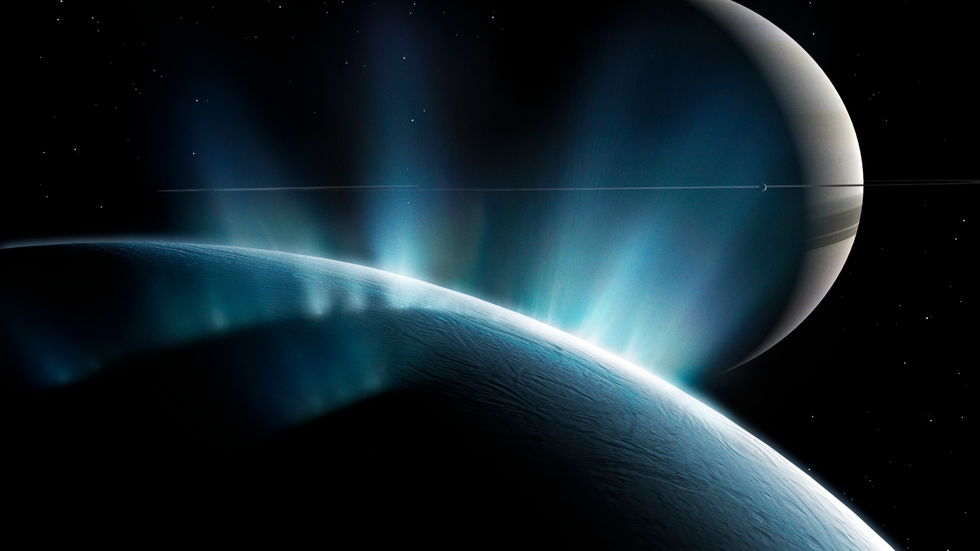Scientists left stunned after Saturn's icy moon reveals 'extraordinary' clues to life
The team of researchers have detected mysterious movements coming from the moon's hidden ocean
Don't Miss
Most Read
Scientists have been left mystified after uncovering "extraordinary" clues to life on Saturn's icy moon.
Researchers who were examining data from the Cassini spacecraft discovered complex organic molecules erupting from Saturn’s moon, Enceladus.
The findings suggest chemical reactions are happening in its hidden underground ocean.
Some of these reactions could form even more complex molecules, which may be important for facilitating life.

Researchers who were examining data from the Cassini spacecraft discovered complex organic molecules erupting from Saturn’s moon
|NASA
TRENDING
Stories
Videos
Your Say
Nasa's Cassini mission first uncovered the underground ocean hidden beneath the icy shell of Enceladus in 2005.
The spacecraft spotted powerful jets of water blasting out near the moon’s south pole, firing tiny ice grains into space.
While some of the microscopic grains fell back onto Enceladus' surface, others escaped and formed a ring around Saturn that mirrors the moon’s orbit.
The study's lead author Nozair Khawaja explained: "Cassini was detecting samples from Enceladus all the time as it flew through Saturn's ring.
"We had already found many organic molecules in these ice grains, including precursors for amino acids."

Nasa's Cassini mission first uncovered the underground ocean hidden beneath the icy shell of Enceladus in 2005
|GETTY
Scientists believe the ice grains making up Saturn’s ring after escaping from the moon may be centuries old.
Over time, the grains have been blasted by space radiation and changed by the harsh environment.
Researchers examining them have since turned their focus to the fresher grains, the ones only recently ejected from Enceladus.
Scientists have said these newer ice grains help give a clearer picture what movements are occurring inside the moon’s hidden ocean.
SPACE - READ THE LATEST:
- Russian 'Noah's Ark' satellite carrying 1,500 animals crash-lands on Earth
- Spaceship that 'eats itself' for fuel set to be made in Britain
- Scientists plan to launch nuclear weapon against 'city killer' asteroid in bid to save the Moon
- Space expert says 'huge question' has been answered in landmark black hole discovery

Scientists believe the ice grains making up Saturn’s ring after escaping from the moon may be centuries old
|GETTY
The Cassini flew directly into the icy spray in 2008, detecting ice grains that had been emitted from Enceladus only minutes earlier.
The Nasa spacecraft's Cosmic Dust Analyser (CDA) detected the ice grains hit the instrument at speeds of more than 40,000mph.
Explaining the importance of the speed at which the grains were detected travelling, Dr Khawaja said: "The ice grains contain not just frozen water, but also other molecules, including organics.
"At lower impact speeds, the ice shatters, and the signal from clusters of water molecules can hide the signal from certain organic molecules.
"But when the ice grains hit CDA fast, water molecules don't cluster, and we have a chance to see these previously hidden signals."
On Earth, these molecules drive chemical reactions that give rise to the complex compounds essential for life.
Dr Nozair said: "There are many possible pathways from the organic molecules we found in the Cassini data to potentially biologically relevant compounds, which enhances the likelihood that the moon is habitable.
"There is much more in the data that we are currently exploring, so we are looking forward to finding out more in the near future."
Our Standards: The GB News Editorial Charter










